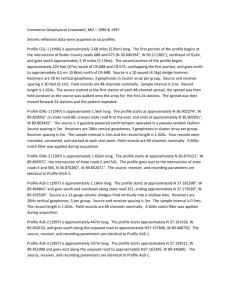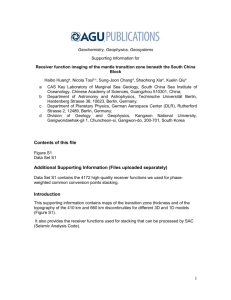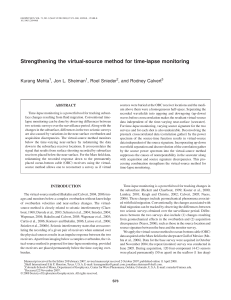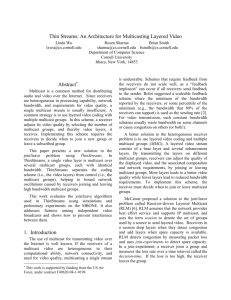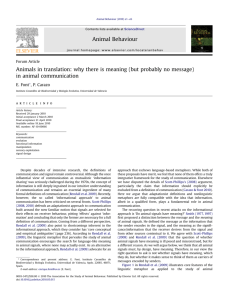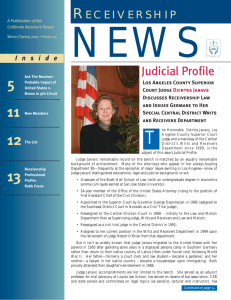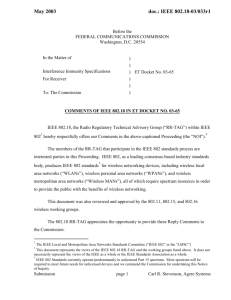Summary_Rifle
advertisement
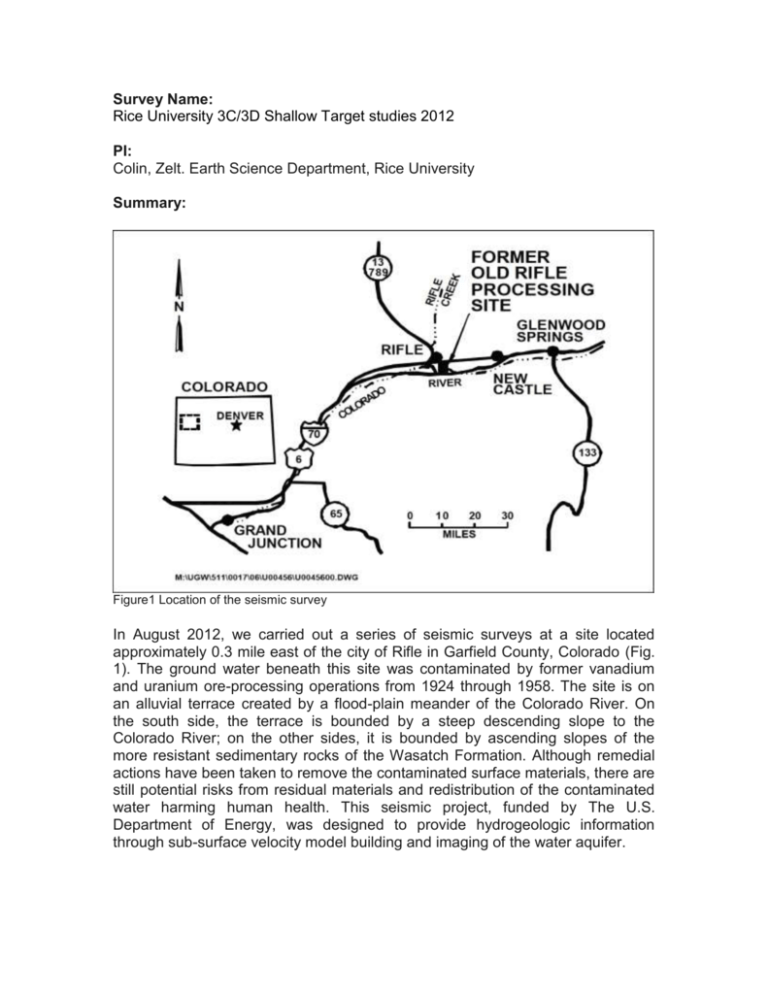
Survey Name: Rice University 3C/3D Shallow Target studies 2012 PI: Colin, Zelt. Earth Science Department, Rice University Summary: Figure1 Location of the seismic survey In August 2012, we carried out a series of seismic surveys at a site located approximately 0.3 mile east of the city of Rifle in Garfield County, Colorado (Fig. 1). The ground water beneath this site was contaminated by former vanadium and uranium ore-processing operations from 1924 through 1958. The site is on an alluvial terrace created by a flood-plain meander of the Colorado River. On the south side, the terrace is bounded by a steep descending slope to the Colorado River; on the other sides, it is bounded by ascending slopes of the more resistant sedimentary rocks of the Wasatch Formation. Although remedial actions have been taken to remove the contaminated surface materials, there are still potential risks from residual materials and redistribution of the contaminated water harming human health. This seismic project, funded by The U.S. Department of Energy, was designed to provide hydrogeologic information through sub-surface velocity model building and imaging of the water aquifer. Seismograph: ES-3000, Geode, and StrataVisor NZ Receiver type: 40Hz receivers for the body waves survey 4.5Hz receivers for the surface waves survey Source type: Accelerated weight drop on a metal plate Sample rate and number of samples: 0.5 ms and 1000 for 2D and 3D body waves survey 1.0 ms and 2000 for active-surface waves survey 4.0 ms and 16000 for passive-surface waves survey Latitude and Longitude: The origin (0m, 0m) of the survey is at 39.5288°N, -107.7716° E The following sections introduce the (1) compressional waves 3D survey, (2) a 2D three-component source and receiver survey, (3) a 3D surface wave experiment using 4.5 Hz geophones, and (4) an ambient noise experiment using 4.5 Hz geophones to record passing vehicles and trains. 3D Survey For this 3D survey and all the surveys, we used ES-3000, Geode, and StrataVisor NZ (all produced by GEOMETRICS) for collecting the data. We used 40Hz vertical component receivers for the 3D survey. A 3D compressional wave seismic survey covers an area that is 96 m in the N-S direction by 60 m in the E-W direction. An orthogonal, symmetric receiver and source template was used with 24 receiver lines, 96 channels per receiver line, and 2.5 m between lines. The inline shot and receiver spacing is 2 m and 1 m, respectively. The source was an accelerated weight drop striking a metal plate. Due to limited number of receivers (384; indicated by white dots in Fig. 2), five deployments were performed to cover the whole survey area. Figure2 The source and receiver geometry plots of the 3D seismic survey with surface elevations as background. The locations of the sources are indicated by black dots, receivers by white dots. A total number of 828,672 raw traces were collected. 2D 3-components Survey A high-resolution 2D seismic survey was performed along x=2.5m (Fig. 3). The receiver distance is 1m starting at x=1m, ending at 96m. The source distance is 2m starting at x=0.5m, ending at x=96.5m. Three-component Galperin mount geophones were used at each receiver location. P-component, SV-component, and SH-component are produced by appropriate summation of the raw components. Figure3 The source and receiver geometry plot of the 2D seismic survey with surface elevations as background. Active- and Passive-Source Surface wave Survey A separate surface wave survey was performed with 48 4.5Hz geophones. And the locations of sources and receivers are indicated in Fig. 4 In addition, about five continuous hours of ambient noise data were collected with the same geophone setup. Potential energy sources are passing vehicles on an east-west road about 50m to the north of the northernmost point of the survey, and passing trains on a east-west railroad about 30m to the south of the southernmost point of the survey. Figure4 Plot of receiver (indicated by white dots) and source (indicated by black dots) geometry with surface elevations as the background.
